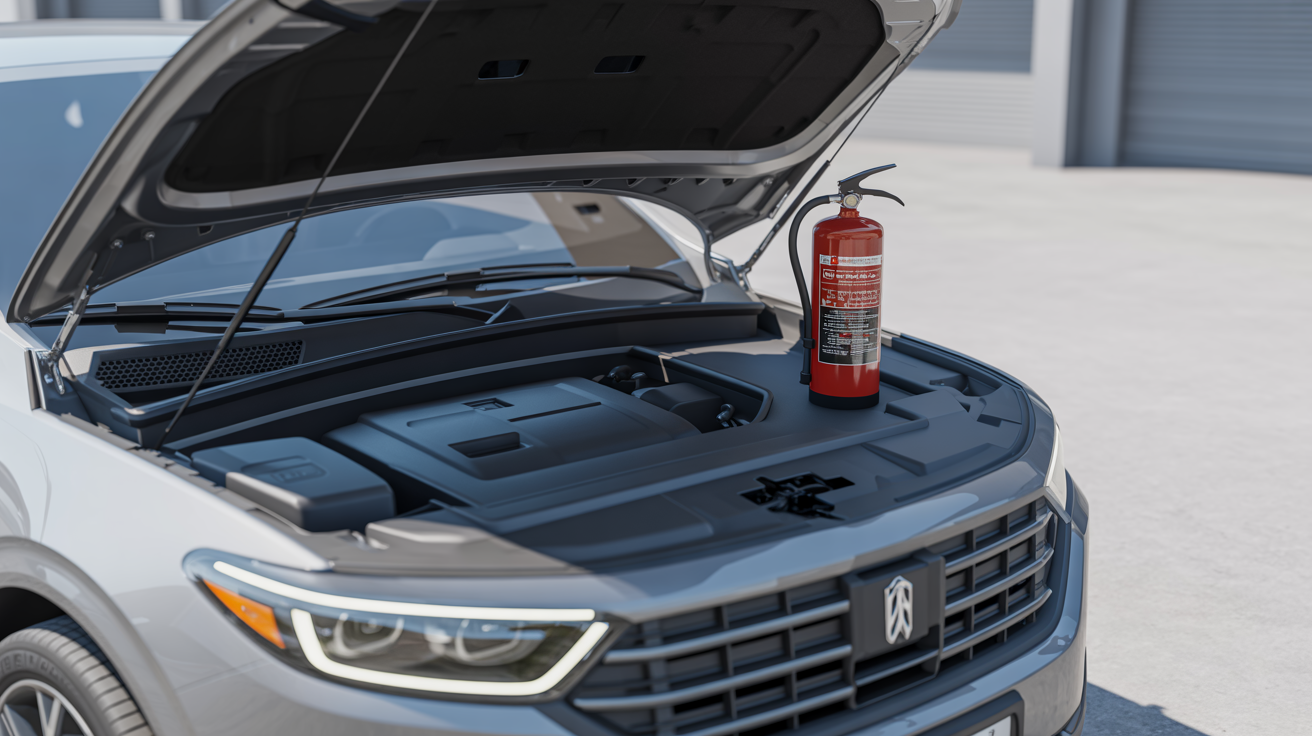Car Fire Safety: Prevention and Emergency Response
Essential guide to preventing vehicle fires and responding safely to automotive fire emergencies. Learn the warning signs, prevention strategies, and emergency protocols.

Vehicle Fire Statistics
Vehicle fires can be catastrophic, but most are preventable with proper maintenance and awareness. Whether you drive a gasoline, hybrid, or electric vehicle, understanding fire risks and prevention strategies is essential for your safety.
Common Causes of Vehicle Fires
Mechanical and Electrical Issues (67%)
- Electrical system failures: Short circuits, damaged wiring, faulty alternators
- Fuel system leaks: Damaged fuel lines, loose connections, fuel tank issues
- Overheated engines: Low coolant, failed cooling system, blocked airflow
- Oil and fluid leaks: Dripping onto hot exhaust components
Collisions and Crashes (4%)
- Impact damage: Ruptured fuel tanks, damaged electrical systems
- Battery damage: Particularly critical in electric and hybrid vehicles
Design Flaws and Recalls
- Manufacturing defects: Faulty components, design flaws
- Check for recalls: Visit NHTSA.gov to check your VIN
Warning Signs of Vehicle Fire Risk
Immediate Warning Signs – Stop Driving Immediately
- • Smoke coming from under the hood or dashboard
- • Burning smell (electrical, oil, or rubber)
- • Visible flames or sparks
- • Unusual clicking or popping sounds from electrical systems
- • Dashboard warning lights (check engine, temperature, battery)
Maintenance Red Flags
- Oil spots under vehicle: Check for leaks onto exhaust system
- Exposed or frayed wiring: Especially in engine compartment
- Cracked hoses or belts: Can cause fluid leaks
- Corroded battery terminals: Risk of electrical fire
Fire Prevention Strategies
Regular Maintenance Schedule
- Oil changes: Follow manufacturer recommendations (typically 3,000-7,500 miles)
- Electrical system inspection: Annually or if warning signs appear
- Fuel system check: Inspect hoses, connections, and fuel cap seal
- Battery maintenance: Clean terminals, check connections, test charge
- Brake inspection: Overheated brakes can ignite nearby materials
Electric Vehicle (EV) Specific Safety
- Use manufacturer-approved chargers: Avoid aftermarket charging equipment
- Park away from structures: During charging, especially overnight
- Inspect for battery damage: After collisions or if vehicle behaves oddly
- Monitor for recalls: EV battery systems are evolving technology
Safe Driving Practices
- Don't ignore warning lights: Address dashboard warnings immediately
- Pull over if you smell smoke: Turn off engine and exit vehicle
- Avoid engine overheating: Monitor temperature gauge on long drives
- Keep flammable materials secure: Store gas cans, oily rags properly
Emergency Response Protocol
If Your Vehicle Catches Fire
- Pull over immediately – Move to shoulder, away from traffic and structures
- Turn off the engine – Remove keys from ignition
- Evacuate all passengers – Get everyone at least 100 feet away
- Call 911 – Report your location and the fire
- Do NOT open the hood – This adds oxygen and can cause flashover
- Only use extinguisher if safe – Small fire, extinguisher accessible, no danger
- Never re-enter burning vehicle – Possessions are not worth your life
Vehicle Fire Extinguisher Guidelines
- Recommended size: 2.5 lb minimum, 5 lb preferred
- Rating: ABC-rated for multiple fire types (or modern all-in-one)
- Mount location: Under driver seat or in easily accessible compartment
- Secure mounting: Prevent it from becoming a projectile in crashes
- For EVs: Consider lithium-rated extinguisher for battery fires
Pro Tip: Modern fire safety products like LifeSafe StaySafe can handle gasoline, diesel, and lithium battery fires, making them ideal for any vehicle type.
Special Considerations for Electric Vehicles
While EV fires are statistically less common than gasoline vehicle fires, they present unique challenges:
EV Fire Characteristics
- Thermal runaway: Battery fires can reignite hours or days later
- Higher temperatures: Lithium fires burn at 500-600°F hotter than gasoline
- Toxic fumes: Burning batteries release hazardous gases
- Water requirements: May require 30,000+ gallons to fully extinguish
Post-Collision EV Safety
- Evacuate immediately: After any significant collision
- Move 100+ feet away: Battery damage may not be immediately visible
- Inform first responders: Tell them it's an electric vehicle
- Monitor for 24 hours: Thermal runaway can occur hours after crash
Vehicle Fire Safety Checklist
Monthly
- Check for fluid leaks under vehicle
- Inspect fire extinguisher pressure gauge
- Look for exposed or damaged wiring
Every 3-6 Months
- Professional oil change and inspection
- Battery terminals cleaning and check
- Inspect hoses, belts, and connections
Annually
- Comprehensive electrical system inspection
- Fuel system inspection
- Check for vehicle recalls at NHTSA.gov
Stay Safe on the Road
Vehicle fires are frightening but largely preventable. By following regular maintenance schedules, staying alert to warning signs, and keeping proper fire safety equipment in your vehicle, you dramatically reduce your risk.
Remember: Your safety is more important than your vehicle. If fire occurs, evacuate immediately and don't look back.